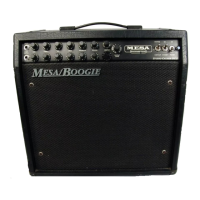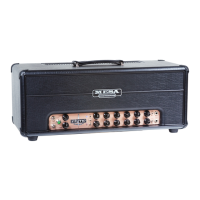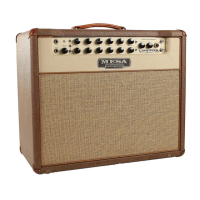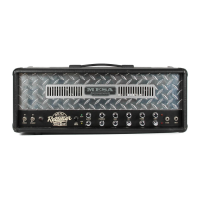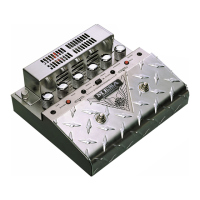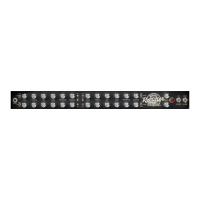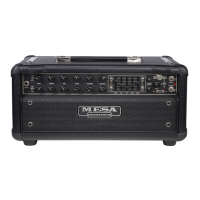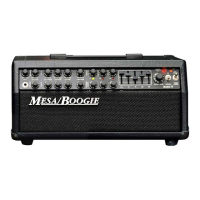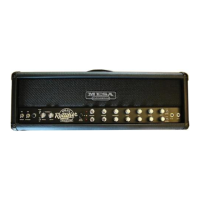- 2 -
To prevent undesirable squealing, noise and feedback, the Volume should be reduced as playing
loudness -- via the Master(s) -- is increased. We only recommend running the Volume above 6 when
the Masters are below 6.
MASTER This control regulates the power amplifier level, or the actual overall loudness. (When you
are in the Lead mode, both the regular Master and the Lead Master operate together -- in series -- to
regulate the overall level.) If you run the Volume at 10, the Lead Master at 4, and the Master at 1 (in
the Lead mode), Grandma can nap in the next room while you annihilate Manhattan with monstrous
metal performance! You'll still get the overdrive and sustain of big amps cranked way up.
Turning up the Master begins to reveal the Studio Boogie's monstrous sound-per-watt capability…it's
much louder than comparably rated amps! The maximum performance for loud, clean rhythm and
hot, high-gain lead playing comes with the Volume and Masters around 5. This puts the amplifier
right in the middle of its range for great sound and easy footswitchability. The taper of the controls is
gradual enough so that dialing in both great Lead and great Rhythm sounds is quite easy to do.
However, the taper of the Master control gets radical at 7 and unleashes the maximum output from
your Studio's power section. And this power amp has been designed to deliver its greatest crunch
when turned up smoking loud! Even with the single 12-inch combo speaker, your friends will be
blown away by the .22's big, tight low end... it truly has the fat chunking sound of a 4x12!
When you want to turn down to soft playing levels and continue to footswitch between Lead and
Rhythm, merely turn down the Master. This will preserve the volume balance between the two
modes.
LEAD MASTER
This control, which is operative only in the Lead mode, works together with the
regular Master to determine your Lead volume. It is "in series" with the regular Master, and is located
"before" it in the signal path. It is also located just before the Effects Loop, and therefore acts as an
effects send
control for the Lead mode (whatever level is set here is the level your effects will
receive), whereas the regular Master is placed after the Loop. You'll most likely find your ideal
Lead/Rhythm balance with the Lead Master somewhere between 3 and 5; its exact setting, of
course, is up to you.
TREBLE This is the most powerful of the three rotary tone controls. At high settings (7½ and above)
it will appear to minimize the effect of the Bass and Middle. But they will become the stronger controls
when the Treble is set below 5. For those who split hairs tonally and want the very best, most bubbly,
funky clean tones, you should find the exact spot on the Treble control where all the tone controls are
balanced. This will usually be somewhere between 6 and 7. Some players are very particular about
the exact spot; they say “6¼” or “6¾” gives them the ideal tonal balance.
When playing hard-core crunch, especially at very soft practice volumes, the or even all the way up.
This will help produce sustain and harmonic jumps at soft playing levels.
For silky, warm and round jazz tones, try running the Studio .22 in the Rhythm mode with the Treble
set low and the Bass and Middle turned up higher. Add sparkle with the Presence control.
BASS, MIDDLE
You've already read some recommendations for these settings in the TREBLE
section, and because the tone controls are interactive, all three must be used together.
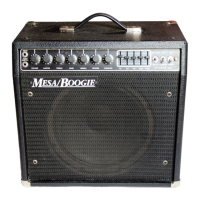
